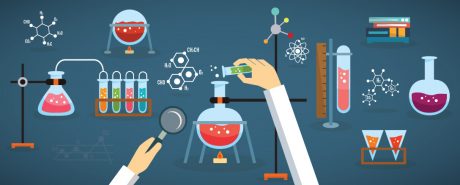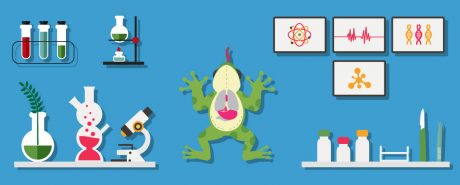Passing your Physics A Level isn’t just an important stepping-stone towards higher education, it’s a crucial factor in ultimately launching a fulfilling career. Jobs in science, research, engineering, systems development or education are all viable options for physics specialists who take their study even further. However employers in all fields are keen to snap up people who’ve proven they have the intellectual rigour to achieve their Physics A-Level.
| Course Code |
|---|
| SDEC112215 |
| Type |
| Online Course |
| Course Access |
| 1 Year |
| Exams Included |
|---|
| No |
| Tutor Available |
| Yes |
| Recognised By |
| Pearson Edexcel QCF |
System requirement
| Processor |
|---|
| 1 gigahertz (GHz) |
| RAM |
| 1 GB |
| Operating Systems |
| Windows 7 Windows 8 Mac OS |
| Browsers |
| Internet Explorer 8 or above Google Chrome Safari 6 or above Mozilla Firefox |
Who is the Course For?
This great-value online course is perfect for anyone who wants to take their GCSE-level skillset in physics to the next level without committing to traditional forms of study such as a college course. This makes this route to A Level success a great option for anyone who needs to fit their study around existing commitments.
What Will I Learn?
The course content contains the syllabus for both AS and A2 Physics. The course takes a context-led (SHAP) approach to learning, meaning study begins with the consideration of applications that draw on one or more areas of physics, moving on to the underlying laws, theories and models. Also, all aspects of the necessary practical skillset are at the heart of the course.
Edexcel, BTEC and LCCI qualifications
The course is delivered in accordance to Edexcel guidelines. Edexcel, BTEC and LCCI qualifications are awarded by Pearson, the UK’s largest awarding body offering academic and vocational qualifications that are globally recognised and benchmarked.
KEY LEARNING POINTS
Tackle AS Level Physics before progressing to A2.
AS Level Physics
- Begin with an overview of the basics which includes hints, tips and many useful links to aid self study.
- Move on to the AS syllabus module 1, incorporating uniform acceleration equations, d-t and v-t graph experiments, d-t and v-t graphs, projectiles, scalars and vectors, resolving and combining vectors, free-body force diagrams and C of G, Newton’s first and second laws, measuring g, Newton’s third law, k.e and g.p.e, conservation of energy, applications of mechanics, work done, power, flow definitions, viscosity and Stoke’s law, Hook’s law, force-extension and stress-strain graphs, material properties and Young’s modulus.
- The above content also includes core practical lessons on acceleration, viscosity of liquid and determining the Young’s model of a material.
- Gain understanding of wave basics, electromagnetic spectrum, wave equation, sound waves, superposition, stationary waves, refractive index, polarisation, diffraction, electron diffraction, echo devices, Doppler effect, current, voltage and resistance, power and efficiency, current-potential graphs, potential divider, internal resistance, thermistor, I=nqvA, electronvolt, photoelectric effect, electron energy levels, atomic line spectra, radiation flux, alternative energy and practical advice.
- The second module also contains core practical lessons on speed of sound, factors affecting waves on a string, using a diffraction grating to determine the wavelength of laser light, resistivity, EMF and internal resistance and calibrating a thermistor in a potential divider circuit.
- In the third module you will learn about choosing equipment, drawing diagrams, justifying measuring instrument choice, repeat readings, safety, sources of error and uncertainty, using data, processing results, recording results, drawing graphs, calculating gradient, discussing and calculating errors before consolidating your knowledge with the conclusion.
A2 Level Physics
- Get to grips with the basics, including handy hints and links.
- Gain understanding of conservation of momentum, momentum and Newton’s second law, elastic and inelastic collisions, circular motion, electric field, capacitors, RC circuits, magnetic fields, conductors in magnetic fields, moving charges in magnetic fields, induced EMF, Faraday’s law, Lenz’ law, Rutherford’s experiment, thermionic emission, particle accelerators and detectors, interpreting particle tracks, matter and antimatter, unified atomic mass unit, relativistic effects, quarks and leptons, the standard model and wave-particle duality.
- This module also includes core practical sessions on force and momentum, using ICT to analyse collisions between small spheres and analysing the discharge of a capacitor.
- In the second module learn about specific heat capacity, internal energy, finding specific latent heat, absolute zero, ideal gas equation, background radiation, nuclear radiations, radioactive energy, applications of radioactive materials, s.h.m, oscillations, resonance, gravitational field, parallel, flux and luminosity, H-R diagram, astronomy equations, Hubble’s law, dark matter, nuclear binding energy, fusion and fission and practical fusion attempts.
- The content above also incorporates core practical lessons on finding the specific latent heat, investigating the relationship between the pressure and volume of a gas at fixed temperature, investigating the absorption of gamma rays by lead and oscillations.
How AS and A Level Physics is assessed
AS paper 1
- Mechanics
- Electric circuits
- Experimental methods (including questions on core practicals)
AS paper 2
- Materials
- Waves and the particle nature of light
- Experimental methods (including questions on core practicals)
A level paper 1
- Further mechanics
- Electric and magnetic fields
- Nuclear and particle physics
- Some AS topics
A level paper 2
- Thermodynamics
- Space
- Nuclear radiation
- Gravitational fields
- Oscillations
- Some AS topics
A level paper 3
- General paper assessing topics across the AS and A level qualifications
- Experimental methods (including questions on core practicals)
Practical assessment
- There are 16 core practicals that over all of the 12 techniques required for the practical competency measure.
- Knowledge of all core practicals can be tested within exam papers.
- Core practicals form part of the practical competency assessment.
Assessments
Examinations can be booked through Pearson and consist of:
AS (Both papers include assessment of maths and practical skills)
Two examinations that are 90 minutes each and carry 50% of the grade weighting per paper, both having a maximum of 80 marks.
A levels (All papers include assessment of maths, paper 3 includes assessment of practical skills)
Paper 1 and 2 are one hour and 45 minutes each, carrying 30% of the grade weighting per paper and are worth a maximum of 90 marks each. Paper 3 is two hours and 30 minutes, carries 40% of overall grade weighting and is worth up to 120 marks.
When students are ready to book their exams they need to get in direct contact with their tutor who will assist and guide them in the booking process.
ADVANTAGES OF THIS COURSE
- Take control of your learning by studying at your own pace on all your devices whenever is convenient for you.
- Enjoy full access to the course for a full year on signing up.
- When you are ready to sit the exam, our tutors will help you arrange to do so at the Pearson centre closest to you (exam fee additional).
- Technical support is available, should you encounter problems.
- Not only is online study a time-efficient way to study, it’s cost-effective too.
- Completing your A Level Physics is an excellent investment in your future both in terms of moving on to higher education and your future career.
Make your physics ambitions a reality by signing up to A Level Physics today.
Practical Work
Practical work is central to any study of biology. For this reason, the specification includes eight core practical activities which form a thread linking theoretical knowledge and understanding to practical scenarios. In following this thread, students will build on practical skills learned at GCSE, becoming confident practical biologists, handling apparatus competently and safely. Using a variety of apparatus and techniques, they should be able to design and carry out both the core practical activities and their own investigations, collecting data which can be analysed and used to draw valid conclusions. One important aspect of practical work is the ability to evaluate and manage potential risks. The variety of different practical techniques and scenarios in the core practical activities give students scope to consider risk management in different contexts. Students should also consider the ethical issues presented by their work in the laboratory, which might include consideration for the ethical use of live subjects, the safe disposal of waste materials, and appropriate consideration for other people involved in their own work or who is working nearby. Also central to the development of practical skills is the ability to communicate information and ideas through the use of appropriate terminology and ICT. Being able to communicate clearly the findings of practical work is arguably as important as the collection of accurate data. Each topic begins with an overview of the wider biological context designed to encourage an overarching approach to both the teaching and learning of the subject. As such, it will not be directly assessed. There are opportunities for students to develop mathematical skills throughout the content. They are required to apply the skills to relevant biology contexts. In carrying out practical activities, students will be expected to use their knowledge and understanding to pose scientific questions which can be investigated through experimental activities. Such activities will enable students to collect data, analyse it for correlations and causal relationships, and to develop solutions to the questions posed. Questions within written examination papers will aim to assess the knowledge and understanding that students gain while carrying out practical activities, within the context of the eight core practical activities, as well as in novel practical scenarios. The written papers will test the skills of students in planning practical work – both in familiar and unfamiliar applications – including risk management and the selection of apparatus, with reasons. As part of data handling, students will be expected to use significant figures appropriately, to process data and to plot graphs. In analysing outcomes and drawing valid conclusions, students should critically consider methods and data, including assessing measurement uncertainties and errors. Examination papers will also provide the opportunity for students to evaluate the wider role of the scientific community in validating new knowledge and the ways in which society as a whole uses science to inform decision making. Within this, they could be asked to consider the implications and applications of biology in terms of associated benefits and risks. Students may also be asked to evaluate methodology, evidence and data and resolve conflicting evidence. Success in questions that indirectly assess practical skills within written papers will come more naturally to those candidates who have a solid foundation of laboratory practice and who, having carried them out, have a thorough understanding of practical techniques. Therefore, where possible, teachers should consider adding additional experiments to the core practical activities. The eight core practicals will provide the basis from which some of the examination questions will be drawn.
Course Reviews
No Reviews found for this course.





